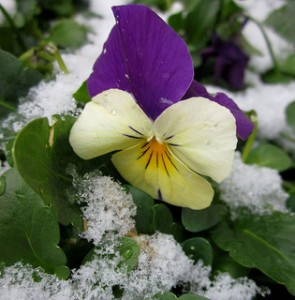When most of us think about planting new specimens in our gardens, spring comes to mind. However, many plants can be successfully planted during the fall too. In fact, there are several reasons why it can be a better idea to do your planting in the fall.
Place Your Trees and Shrubs Now
If you think about it, planting in the fall is wonderful for trees and shrubs. When you plant in the spring, they face the possibility of dealing with growing conditions that are hot and dry when they are still newly forming roots. If you are planting in the fall, the roots will still continue to grow even after the rest of the tree or shrub has gone dormant. This will allow them to create a strong root network that will give the plant a better chance of survival in harsh conditions.
Try to do your planting towards the start of fall. You do want to avoid planting bare root trees or shrubs at this time, however, as these have a harder time getting their roots going in time. Choose ones that come in containers or are in a ball and burlap. Some species like magnolias and birches are harder to establish in fall and should be planted in the spring.
You Can Do a Fall Vegetable Garden
There are two types of vegetables that you can plant: cool season and warm season. One of the benefits of the cool season type is that you can do two crops per year. The first is planted earlier in the spring and the second is timed to produce a fall crop before the hard frosts set in. Some of the vegetables like peas often do a little better even with a light frost. You can also extend the growing season even farther by using structures like cold frames, hoop houses and greenhouses.
Some cool season vegetables for fall include:
- Beets
- Broccoli
- Cabbage
- Carrots
- Collards
- Garlic (should be planted in late fall for the next year)
- Lettuce
- Kale
- Onions
- Radishes
- Spinach
- Turnips
Plant Some Pansies!
I remember seeing pansies among the snow when I was in college. These joyous flowers will give you two flower shows if you plant them in fall. Deadhead them so the blooms are extended and mulch them when the ground freezes so they will have some protection from the freezing temperatures.
You Can Do Some Perennials Too
This is when you can plant many of your perennials like irises, hostas and peonies. You can also divide existing ones to create new plants.
What do you plant in the fall?
Image by apium under a Flickr Creative Commons Attribution License



